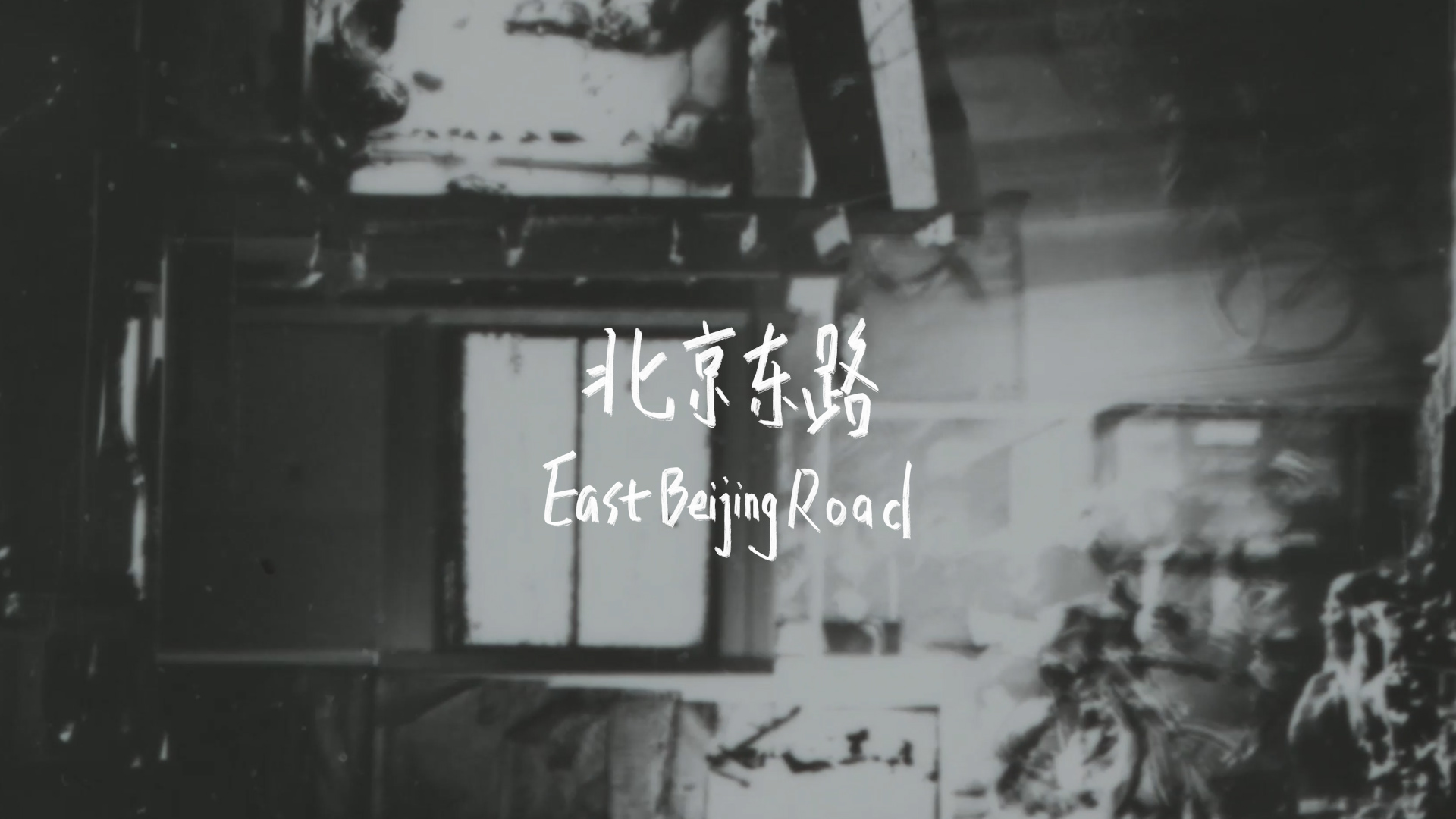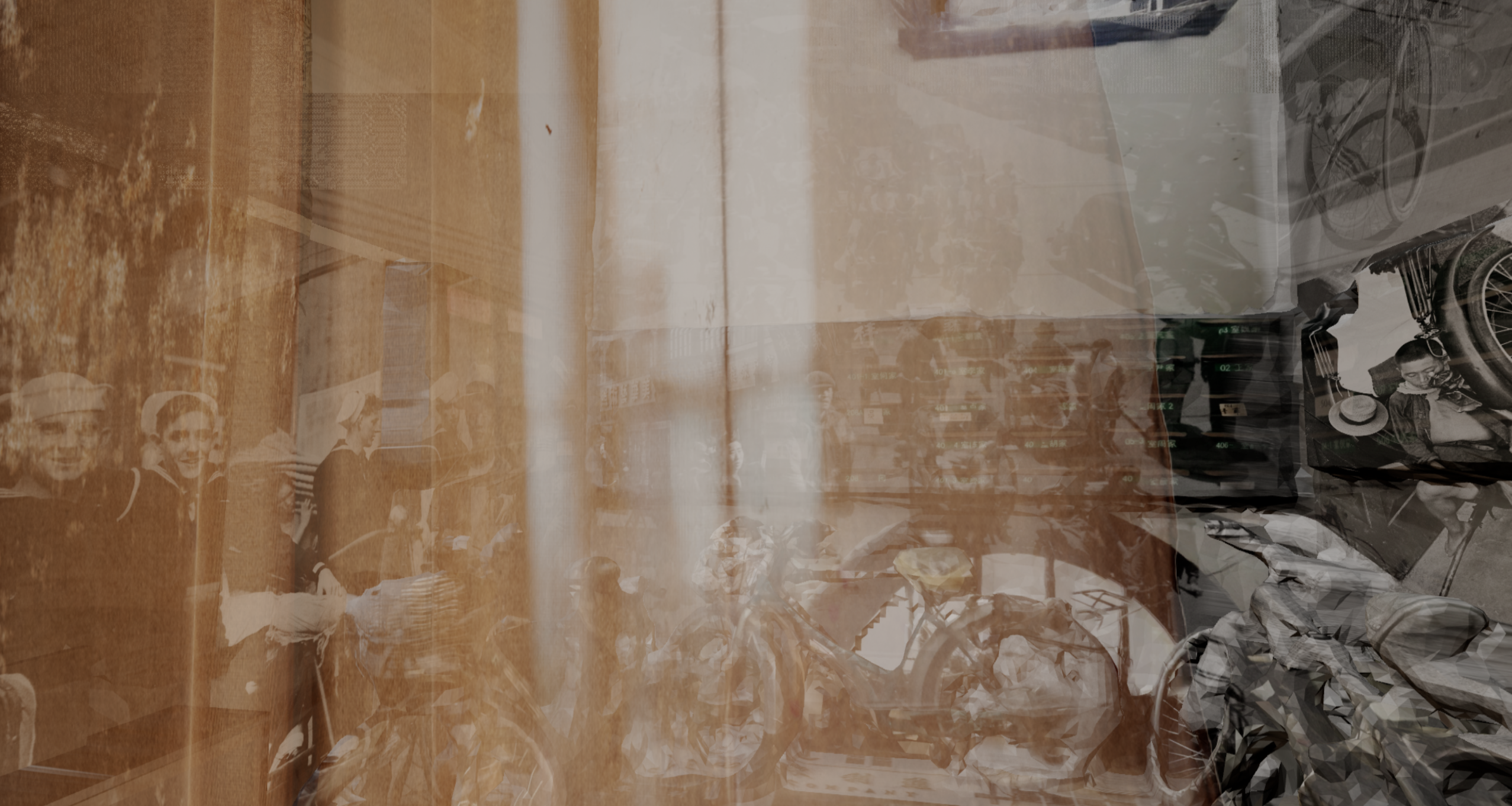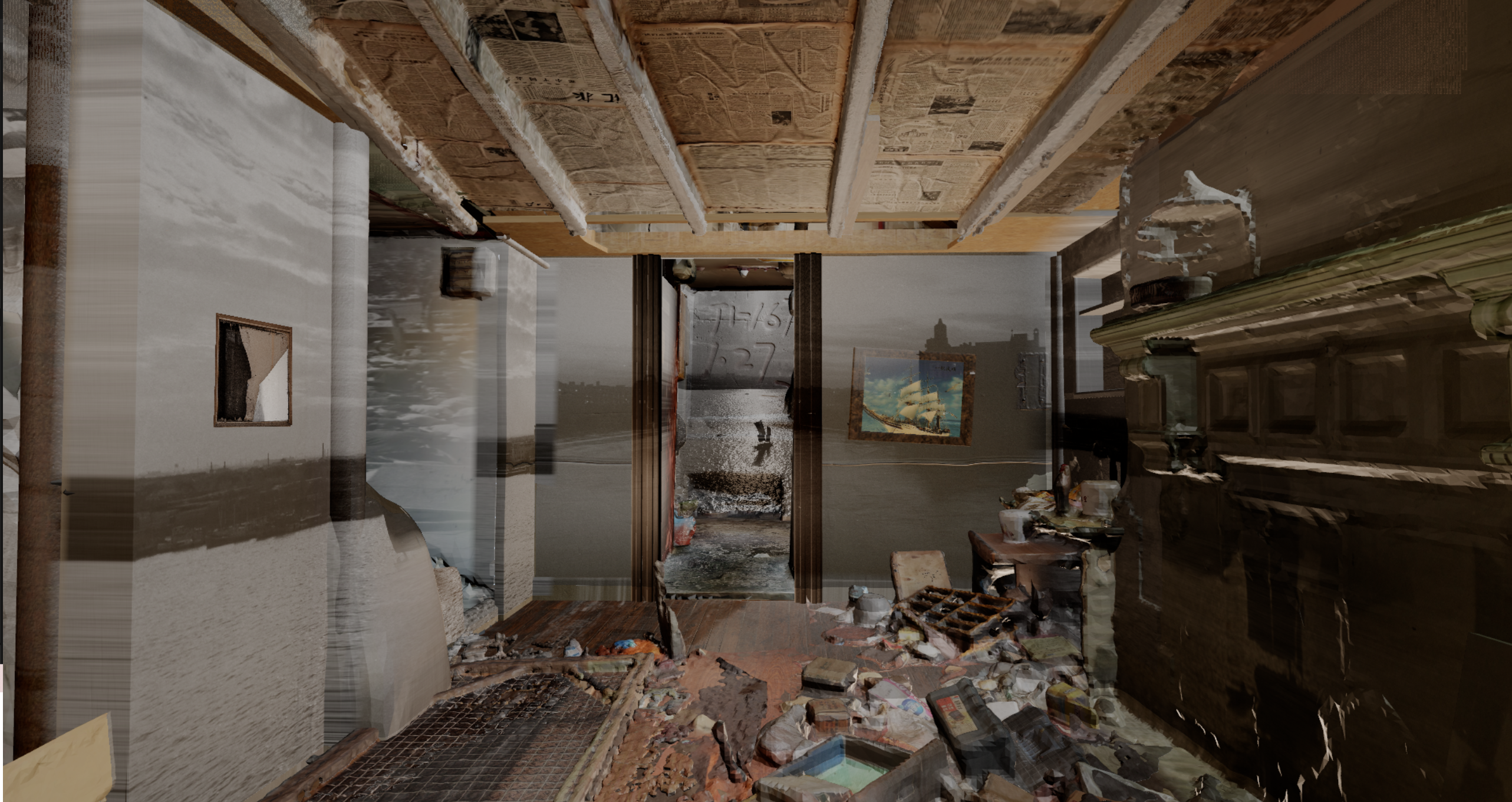East Beijing Road
East Beijing Road is an asymmetric VR project that reimagines the stories of a building in Shanghai. All the residents in this building were forced to move out because of the gentrification policy. By reconstructing the 3D photogrammetry models collected in this building, a synthetic space is formed layering sources from different places and time periods, such as the archive photos taken in the 1940s in Shanghai from LIFE Photo Collection, the music from Spring in a Small Town (1948), and interview with an elderly who had lived in this building more than half century. By weaving these materials together in virtual space, the audience wearing a VR headset can use the controller to unfold the hidden fictional/nonfictional stories. Meanwhile, a video projection outside VR screens the hand-processed film footage which is captured by Bolex from shooting this constructed virtual 3D environment. The audience in VR triggers different stories which change the video projection accordingly. This asymmetric VR creates a discrepancy between seeing inside and outside of VR: one is a colorful spatial virtual environment and another is a black-and-white flat moving image with traces of hand processing. Old and new, digital and analog, and virtual and physical interweave together in the process of making and final presentation. The ambiguity of time and space in this project asks questions about the perception of past and present, the flux of archives, and the meaning of ruins. This project is about loss and memory, yet it is not about melancholy. It reconsiders our relationship with the past with the remediation of technologies.


